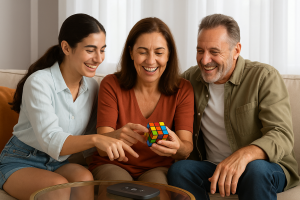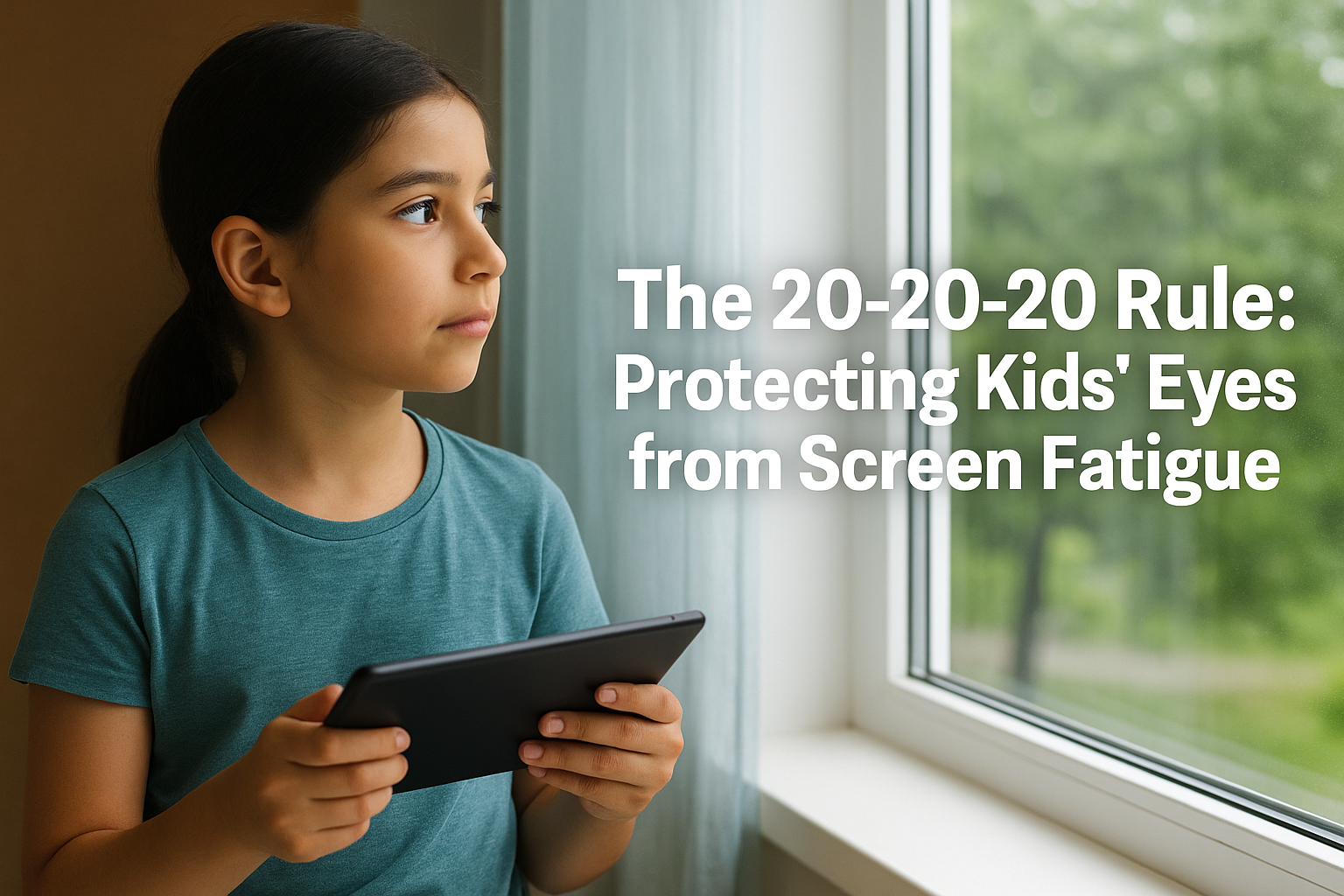Why Screen Fatigue Matters
Screens are part of childhood now — online classes, homework, games, and social media. But with more screen time comes eye strain, headaches, and poor sleep.
🗣️ “Every scroll rewires your child’s eyes. The 20-20-20 rule is a small step with a big impact.”
What Is the 20-20-20 Rule?
Every 20 minutes → Look at something 20 feet away → For 20 seconds.
👉 This quick reset relaxes eye muscles, prevents strain, and keeps kids focused.

Why It’s a Game-Changer for Kids
-
Reduces risk of myopia (nearsightedness)
-
Relieves digital eye strain (dry eyes, headaches)
-
Helps restore better sleep by reducing blue light impact
-
Boosts focus and concentration in schoolwork
How Parents Can Teach It at Home
✅ Set reminders — Use a timer or watch
✅ Make it fun — Spot birds, cars, or trees outside
✅ Practice together — Parents + kids do it at the same time
✅ Add movement — Stretch, blink, or take a sip of water
✅ Blend into schoolwork — Ask teachers to add quick breaks

Pair It With Healthy Habits
-
No devices in bedrooms at night
-
Adjust brightness & use night mode
-
Encourage outdoor play for natural focus
-
Device-free family meals
✅ Parent Checklist: Daily Screen Safety
The 20-20-20 Rule Checklist A simple daily guide to protect your child’s eyes from screen fatigue and build healthier digital habits.
■ Morning Routine
• Encourage a quick outdoor view before starting online classes.
• Set a timer reminder for the 20-20-20 rule during schoolwork.
• Position screens at eye level to avoid strain.
■ School / Study Time
• Every 20 minutes, look at something 20 feet away for 20 seconds.
• Blink often and take water breaks to refresh eyes.
• Incorporate short stretches during breaks.
■ Evening Routine
• Avoid screens at least 1 hour before bedtime.
• Use night mode or blue-light filters in the evening.
• Encourage reading, journaling, or relaxing offline activities.
■■■■■ Family Habits
• Have device-free family meals.
• Practice the 20-20-20 rule together to set an example.
• Plan weekly outdoor or screen-free family activities.
Checklist includes:
-
Morning, school, and bedtime screen routines
-
Eye-care reminders
-
Device-free family moments
❓ FAQs for Parents
Q1: When should kids start this habit?
As soon as they regularly use screens — even at ages 5–6 with guidance.
Q2: Does it really protect vision?
Yes. Regular breaks + outdoor time can slow down nearsightedness.
Q3: Can schools adopt it?
Absolutely. Many schools already include eye breaks in online classes.
Final Thought
The 20-20-20 rule is free, simple, and effective. It takes seconds but can make a lifelong difference for your child’s eyes and overall health.
🌟 “Healthy eyes mean sharper focus, better sleep, and a happier childhood.”

Driven by a vision to educate and inspire, she began a mission to raise awareness about the hidden harms of the digital world. Her unique ability to express these challenges and her courage to stand alone in this fight make her voice powerful. She may not know how far her mission will go, but every day she works hard, determined to help young people take back control of their lives and build a healthier future beyond the screen


Leave a Reply